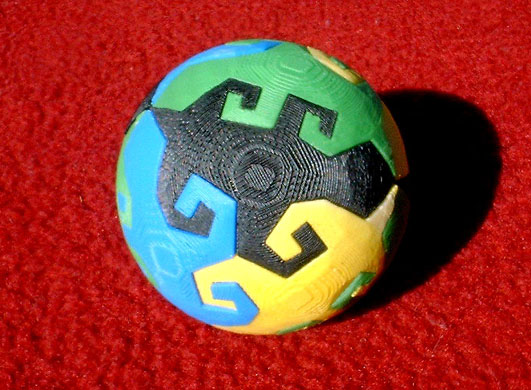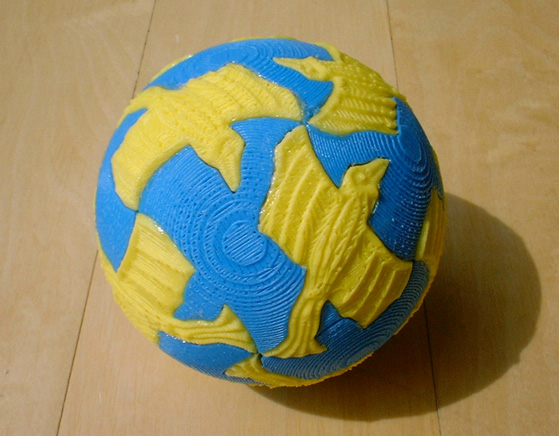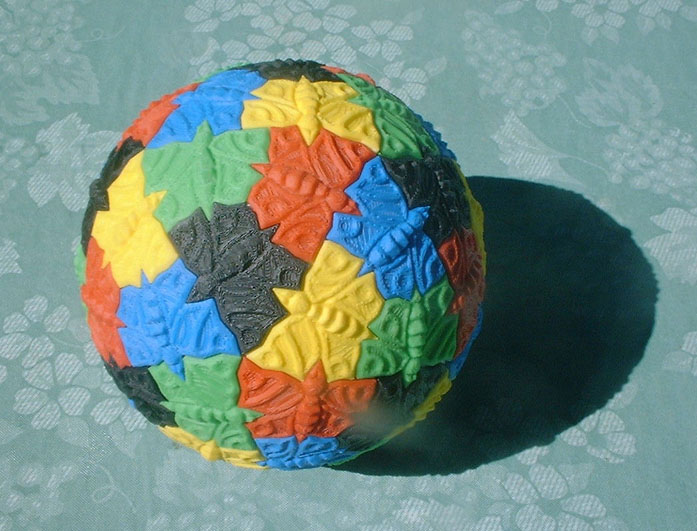Suppose you want to design a roughly spherical, smooth ball, implemented by a B-spline or CC-subdivision surface, and decorate it with six "cubistic" fish as shown on the right.
What would be your starting model or control polygon ?
How do you define a suitable texture and appropriate texture coordinates on your surface ?


Escher tiling with 12 lizards

Escher tiling with 24 birds

Tiling with 60 butterflies

